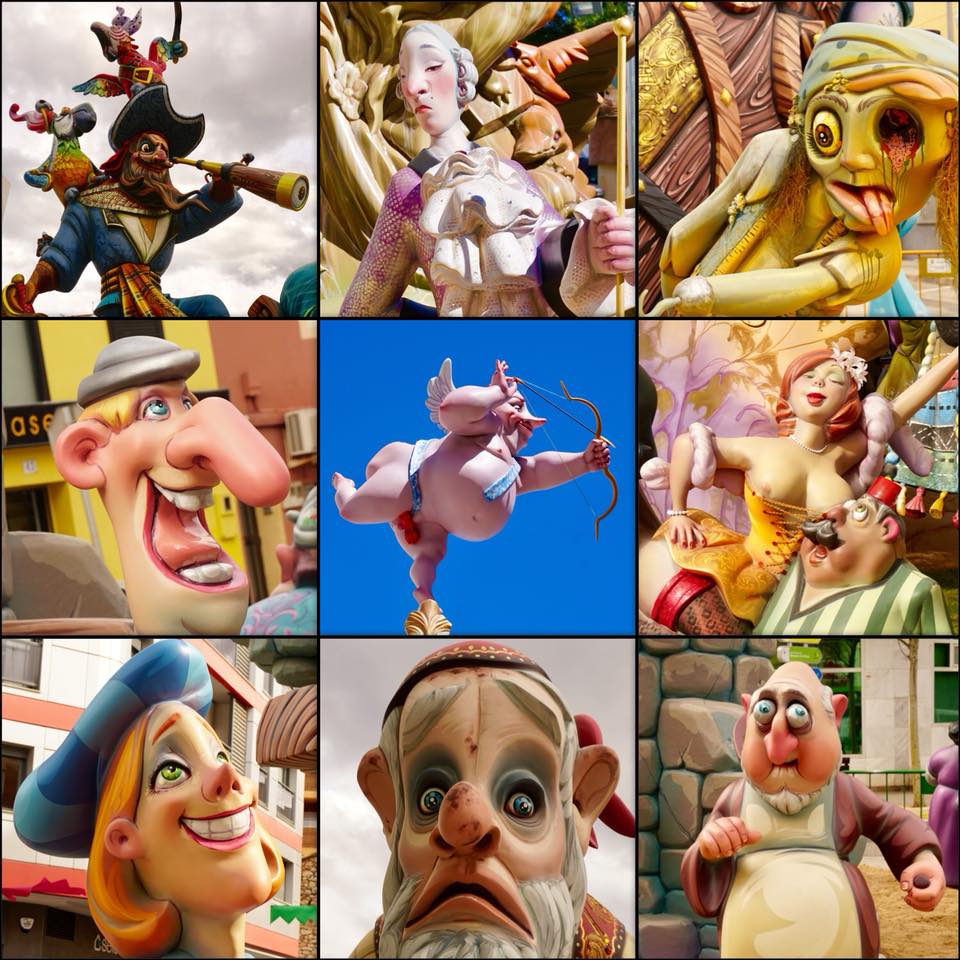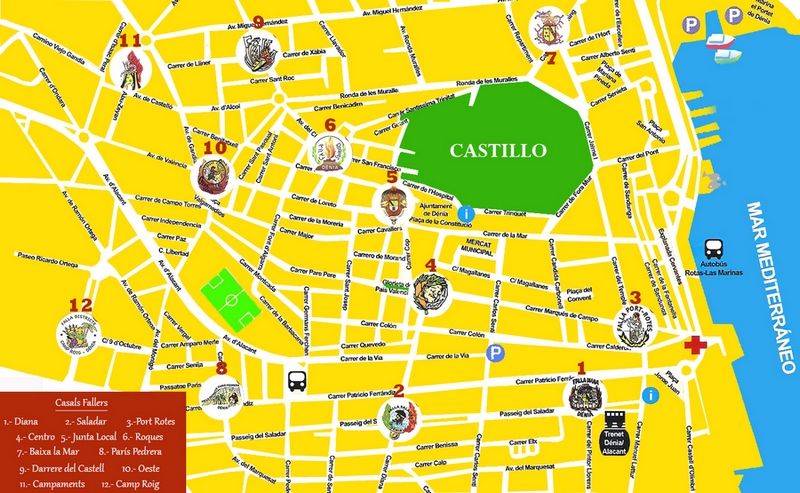On 10th March this event was cancelled by local government due to Corona Virus
The Fallas celebrations in Dénia take place from March 15 to 19, but the street festivities begin the last week of February. During this period, various festive events are to be discovered in many street corners, such as:
Pasacalles : these are the parades in the streets of Dénia of the different Comisiones falleras accompanied by their bands of music. The pasacalles take place in the streets of Dénia throughout the Fallas celebrations.
Without forgetting the parades of falleras and falleros dressed in their magnificent traditional clothes !!!
On March 17, 18 and 19, the Despertà takes place : the city’s firecrackers wake up between 7 a.m. and 8 a.m. The first official act is the Cridà: when the fallera mayor proclaims the start of the festivities by inviting the population to participate.
Mascletás : this is a series of firecracker explosions that lasts 7 minutes, the deafening noise of which increases and plunges you into temporary deafness. Every day at 2 p.m., the mascletá takes place in secure places for the occasion, with barriers and the presence of firefighters and a first aid service. In Dénia, the mascletás take place in the Plaza de La Glorieta (final of the Marqués de Campo street), and in Plaza Jaume I. The Mascletà owes its name to the “Masclet” which is a great power fireworks.
Plantá : On March 16, each district of Dénia, 11 in all, realizes the “plantá” that means that they set up in its main crossroads gigantic fallas built of wood, cardboard or other composite materials, supported by structures of wood which support them. Each district exhibits a falla major (for adults) and a child falla (for children). They include signs written in Valencian explaining the meaning of each staging, always with a critical and satirical sense.

On March 17, the awards ceremony for infantile and adult Fallas takes place.
On March 19, San José day at 11.30 a.m., the flower offering at the Virgen de los Desamparados (Virgin of the Forsaken) the route is as follows: Marqués de Campo Street, Diana Street, Magallanes Street to reach the plaza del Convento. Here, all the falleras and falleros (between 600 and 700) in their best clothes will bring bouquets of flowers to the Virgen de los Desamparados, made as a replica in solid wood 14 meters high. Each bouquet offered to the virgin will be used to fully cover the replica with a coat of flowers.
Nit del foc et cremá : The night of fire is March 19, when the Fallas will be burned. Around 7:30 p.m. begins the crema of infantile fallas, then every 30 minutes – 1 hour, all the large Fallas will be burned. Only the ninot indultats will be spared, which are the figurines that each fallera major decides to keep from his falla, as a souvenir.
The second Saturday or Sunday in March (variable date) the “globotada” takes place : big balloon party in the C/Marqués de Campo. From “La Glorieta” to the port, the Marqués de Campo street will be crossed by an immense number of balloons and after announcement, the children will blow them up by grouping at the 2 ends of the street.

Take a look at the history…


